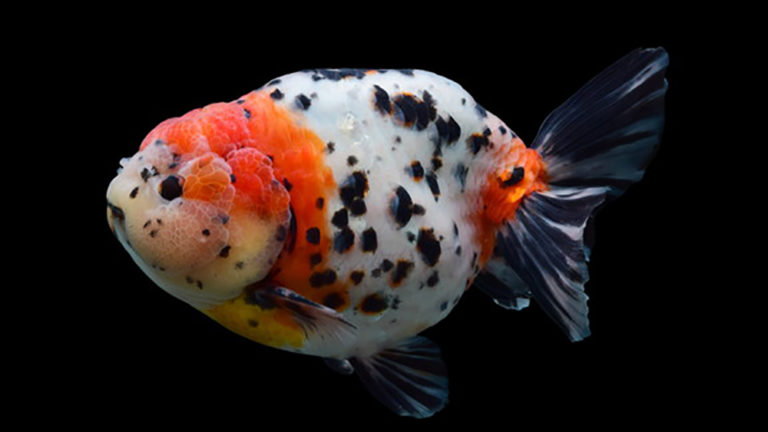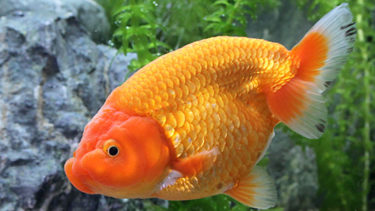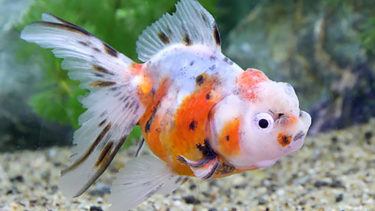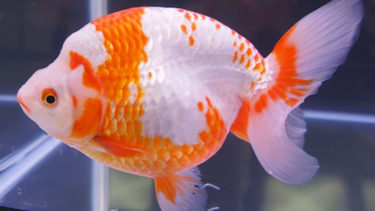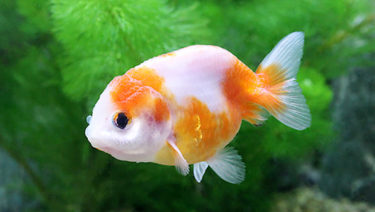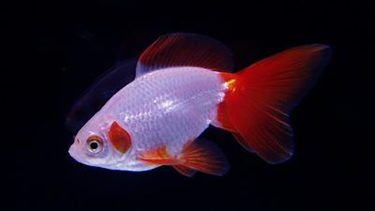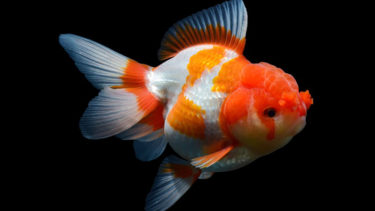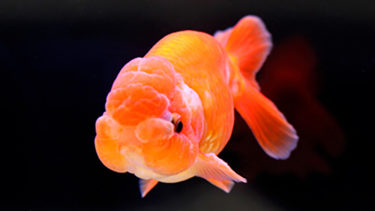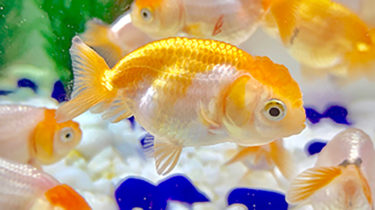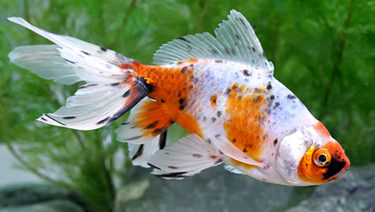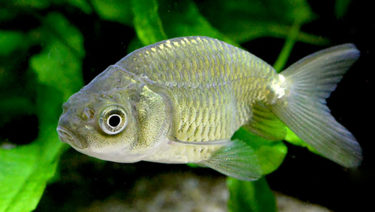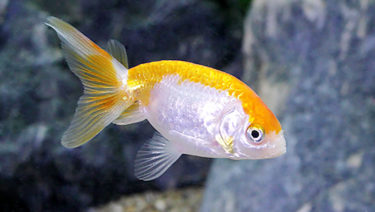The Edo Nishiki is a goldfish characterized by its lack of a dorsal fin and round belly like the Ranchu, but without a head mass. In this article, I would like to explain in detail the characteristics of the Edo Nishiki and how to keep it.
What is Edo Nishiki?
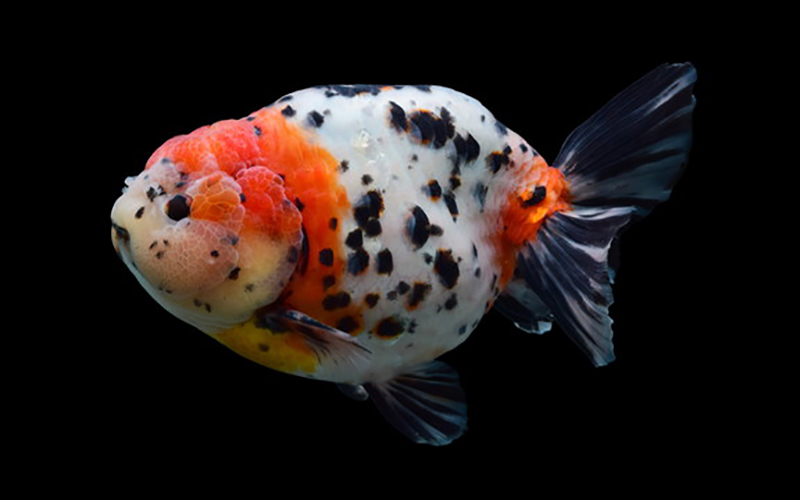
The Edo Nishiki is a fixed breed created by crossing Ranchu and Higashi-Nishiki. It has the same body shape as the Ranchu, including the lack of a dorsal fin, and has the same mosaic transparent scale calico (tricolor) pattern on its body color as the Azuma Nishiki.For this reason, it is a variety that is highly regarded among the Ranchu lineage, as it is possible to enjoy the unique combination of colors and patterns peculiar to varieties with calico patterns. Usually, the Edo Nishiki inherits the short tail fin characteristic of the Ranchu, but in rare cases, individuals with a longer tail fin may be born, inheriting the characteristics of the Azuma Nishiki. Individuals with such characteristics are called Kyonishiki.
The Ranchu is a goldfish with a well-developed fleshy head like the Dutch lionhead, but unlike other goldfish, it is unique in that it has no dorsal fin. In this article, we would like to explain in detail the characteristics of the Ranchu and how to keep it. What is Ranchu?
The Azuma Nishiki has the same body shape as the Orchid Lion's Head, but it is a goldfish with three different colors (calico). It is a goldfish with a different charm and enjoyment than the Woran Shishito, and each goldfish has its own personality. In this article, I would like to explain in detail the characteristics of the Azuma Nishiki and how to keep it. What is Azuma Nishiki [...]
When choosing a goldfish, one of the most important factors to consider is the color of the body. In this article, we would like to introduce some of the most famous colors and their names. Body colorIn the world of goldfish, the body color of a goldfish has a name. In this article, I will explain two words that you often see in specialty stores [...].
Origin of Edo Nishiki
Edo Nishiki is a goldfish created by Mr. Kichigoro Akiyama II in 1951. Later, in 1957, it was named Edo Nishiki after its place of origin.When the Edo Nishiki was immobilized and improved, the individuals without dorsal fins became recessive when Higashi-Nishiki with dorsal fins were crossed with Ranchu without dorsal fins. After the death of Kichigoro Akiyama II in 1960, Kichigoro Akiyama III took over the breeding program, and in 1962, the breeding program was improved at the then Tokyo Metropolitan Fisheries Experiment Station. In 1967, 70% of the fry obtained from egg collection had mosaic transparent scales, and 50% had no dorsal fins. By this time, more than 15 years had passed. It took more than 15 years to reach this stage. Nowadays, the fish is farmed in Yatomi City, Aichi Prefecture, Sakado City, Saitama Prefecture, and many other places in Japan.
Many people think that goldfish are the goldfish that you see at fairs and festivals in the summer, and that there are many different kinds of goldfish. And it is no exaggeration to say that each type of goldfish has its own characteristics, and that is the best part about goldfish [...]
How to enjoy Edo Nishiki
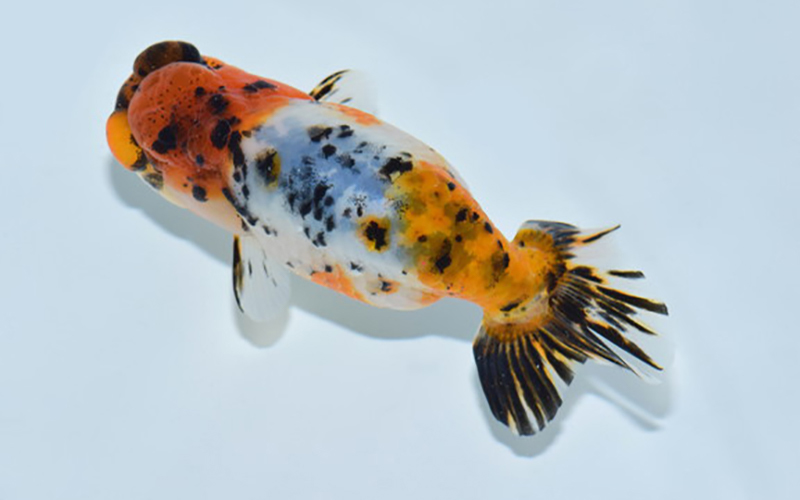
The way to enjoy the Edo Nishiki is the characteristics inherited from the Ranchu and the body color inherited from the Azuma Nishiki. If you want to enjoy them, we recommend that you view them from the side (side view) in an aquarium.By viewing it from the side, you can see at once its characteristic dorsal finless part and the calico pattern, which produces various patterns and a wide variety of colors when exposed to light, etc. It is recommended for those who want to enjoy it as one of the Ranchu, as you can see the original beauty of the Ranchu by viewing it from above in a pot, etc., rather than viewing it from the side.
Points to keep in mind when mixing swimmers
When mixing goldfish with other goldfish and other species, there is sometimes uncertainty as to what species is good and what species is not. First,There is no general prohibition against this or that when mixing goldfish with other species.Therefore, depending on the personality and environment of the goldfish you keep, even species that are said to be bad for each other may get along well with each other. However, there is also the matter of compatibility between goldfish. If you put incompatible goldfish together, there is a high possibility that they will fight or that only one of them will monopolize the food. However, as explained in the beginning, there is no prohibition for goldfish, so if you want to mix them, it may be OK to do so. Now, let us explain which goldfish are compatible with Japanese goldfish and which are not.
Compatible goldfish
Goldfish that are most compatible with the Edo Nishiki are Ranchu-type goldfish such as Ranchu and Sakura Nishiki.Since the Edo Nishiki breed is a very poor swimmer, we recommend a Ranchu-type goldfish, which is also a poor swimmer, so that the goldfish will eat the food first and will be less stressed by being chased by other goldfish.
About Ranchu
About Sakura Nishiki
About Ranchu Type
Incompatible goldfish
Goldfish that are incompatible with Edo Nishiki are Japanese goldfish, such as Wakin (Japanese goldfish) and Comet (Japanese goldfish).Many Japanese goldfish are agile and grow large in a short period of time. If they are mixed with Wagane type goldfish, please be aware that the Edo Nishiki may be eaten by other Wagane type goldfish, such as food, and the difference in body size may cause them to move apart.
About WAKIN
About Comet
About Us
Points to keep in mind when keeping Edanishiki

The Edo Nishiki is the same as the Ranchu in terms of how to keep it, but it has a different attraction from the Ranchu because it has a calico pattern, a feature that the Ranchu does not have.The calico pattern is a pattern that gives a very different impression depending on the angle from which it is viewed and who is looking at it, so it is easy for different people to have different likes and dislikes. This is true for all breeds with calico patterns, and of course it is true for Edo Nishiki as well. For example, some people prefer a lot of red, while others prefer a lot of white or black. Therefore, it is easy to show the individuality of the breeder when keeping the Edo Nishiki. The Edo Nishiki is not a breed that is generally distributed in large quantities. If you are interested in keeping one, we recommend that you ask the staff at a specialty store whether they carry Edo Nishiki or not.

